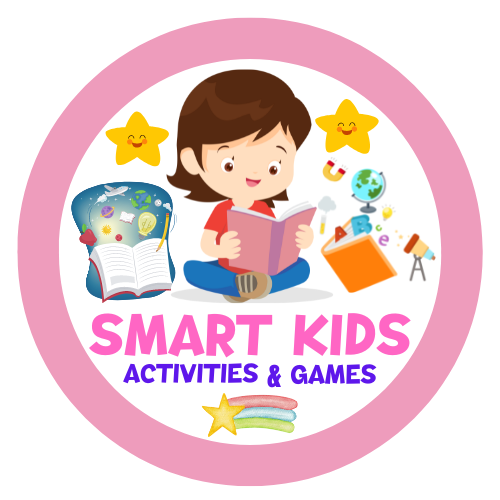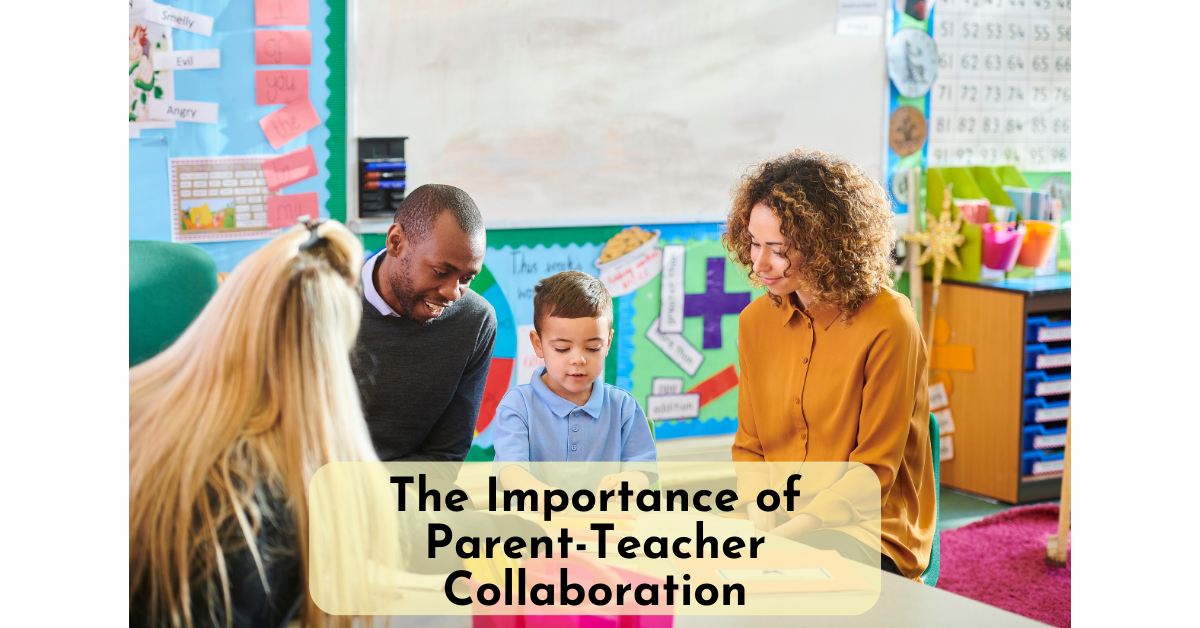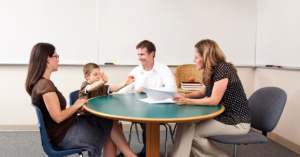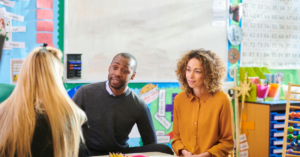Key Takeaways:
- Parent-teacher collaboration is important for a student’s academic success.
- Collaboration creates an optimal learning environment.
- Effective communication between parents and teachers is crucial.
- Collaboration helps address challenges and identify opportunities for the student’s growth.
- Building a strong collaborative relationship takes effort from both parents and teachers.
Benefits of Parent-Teacher Collaboration
Parent-teacher collaboration offers a range of benefits that positively impact the student’s educational journey. By fostering a strong partnership between parents and teachers, we create an environment conducive to academic growth, emotional wellbeing, and overall development. Let’s explore the key benefits of parent-teacher cooperation:- Building Positive Relationships: Collaborating with parents allows teachers to establish strong relationships and trust. This positive connection creates a supportive network that enhances student learning and motivation.
- Enhancing Communication: Open lines of communication fostered through collaboration ensure that vital information is shared effectively. Parents and teachers can exchange insights about the student’s progress, strengths, and challenges, enabling a holistic approach to their education.
- Creating a Welcoming Learning Environment: Parent-teacher collaboration creates an inclusive and welcoming learning environment for students. When parents actively engage in their child’s education, their presence and support encourage a sense of belonging and motivation.
- Understanding Students Better: Collaborating allows teachers to gain a deep understanding of their students’ unique needs, interests, and learning styles. This knowledge enables tailored teaching strategies and individualized support to help students reach their fullest potential.
- Promoting Academic Success: Through collaboration, parents can actively participate in their child’s academic journey. By staying informed about assignments, exams, and projects, parents can provide additional guidance and support at home, ultimately improving student performance.
- Fostering Holistic Development: Parent-teacher collaboration extends beyond academics, also encompassing social and emotional development. Teachers can share valuable insights into the student’s behavior and social interactions, helping parents nurture their child’s emotional wellbeing.
| Benefits of Parent-Teacher Collaboration |
|---|
| Building positive relationships |
| Enhancing communication |
| Creating a welcoming learning environment |
| Understanding students better |
| Promoting academic success |
| Fostering holistic development |
Struggles in Parent-Teacher Collaboration
While parent-teacher collaboration is essential for fostering student success, there are several challenges that can hinder the effectiveness of this partnership. These challenges include:- Lack of communication: A lack of consistent and open communication between parents and teachers can create barriers to collaboration. Without regular updates on student progress and challenges, it becomes difficult to address issues in a timely manner.
- Limited parental involvement: Some parents may struggle to find the time or resources to actively engage in their child’s education. This limited involvement can hinder the depth of collaboration and impact the student’s overall development.
- Difficulties coordinating supplementary activities: Coordinating supplemental activities outside of normal school hours can be a challenge. Parents and teachers may have conflicting schedules or face logistical obstacles that prevent effective collaboration in this aspect.
- Actively encourage communication through phone calls, newsletters, and the use of communication apps like Remind or ClassDojo.
- Provide resources and suggestions for supplementary activities that can be easily integrated into the student’s home routine.
- Be open to feedback from parents and create a safe space for them to express their concerns or suggestions.
“Building a strong collaborative relationship between parents and teachers takes effort, but the benefits for the student’s education and development make it a worthwhile endeavor.”By addressing these struggles head-on and implementing strategies to overcome them, educators can foster a more effective and beneficial parent-teacher collaboration that positively impacts student success.
| Challenges | Strategies for Overcoming |
|---|---|
| Lack of communication | Encourage regular communication through phone calls, newsletters, and communication apps. Keep parents informed of the student’s progress and challenges. |
| Limited parental involvement | Provide resources and suggestions for easy-to-implement activities at home. Foster a welcoming and inclusive environment to encourage greater parental involvement. |
| Difficulties coordinating supplementary activities | Suggest and coordinate activities that can accommodate different schedules and logistical constraints. Facilitate open communication for finding mutually agreeable solutions. |
Strategies for Effective Parent-Teacher Collaboration
To establish and maintain effective parent-teacher collaboration, communication is key. Here are some strategies that can enhance collaboration and foster a strong home-school partnership:1. Initiate Contact Early On
Teachers should reach out to parents at the beginning of the school year or semester to introduce themselves, establish a line of communication, and express their willingness to collaborate. This proactive approach sets a positive tone and shows parents that their involvement is valued.2. Establish Timeliness in Addressing Concerns
Timely response to parents’ questions or concerns is crucial for building trust and maintaining open lines of communication. Teachers should prioritize and respond promptly to emails, phone calls, or other forms of communication, ensuring that the parent’s voice is heard and that issues are addressed in a timely manner.3. Maintain Consistent and Frequent Communication
Consistent and frequent communication between parents and teachers helps keep everyone informed about the student’s progress, upcoming events, and any areas of concern. Regular updates, newsletters, or class websites can be effective tools for sharing important information and fostering ongoing collaboration.4. Provide Clear and Constructive Communication
Effective communication involves clarity and constructive feedback. Teachers should provide parents with clear information about their child’s academic performance, behavioral issues, or areas that need improvement. It is equally important to offer suggestions and resources that can support the student’s learning and overall development.5. Surprising Parents with Positive News
In addition to addressing concerns, it is important to share positive news with parents. Surprising them with praise or acknowledging their child’s achievements can strengthen the parent-teacher relationship and motivate the student. Celebrating successes together promotes a sense of collaboration and teamwork.6. Align Goals and Address Challenges Together
Collaboration is about working together to support the student’s learning and development. Teachers and parents should align their goals, ensuring that they are on the same page when it comes to the student’s academic progress, behavior, and overall well-being. By addressing challenges together, parents and teachers can find solutions that benefit the student. By implementing these strategies, teachers can effectively collaborate with parents, promoting positive parent-teacher communication and a strong home-school partnership. This collaboration ultimately contributes to the student’s success both academically and socially.Tools for Facilitating Collaboration
Technology plays a significant role in enhancing parent-teacher collaboration. With the help of various collaboration tools, parents and teachers can easily communicate and work together to support student success. These tools streamline communication, foster resource sharing, and increase parental involvement in school events and activities.Video Conferencing Software
To enable face-to-face communication without physical proximity, video conferencing software like Zoom has become an invaluable tool for parent-teacher communication. Through virtual meetings, teachers and parents can discuss student progress, address concerns, and collaborate on strategies to support learning. Video conferencing allows for a more personal connection, fostering a sense of unity in the education journey.Mobile Apps
Mobile apps like Remind and ClassDojo offer a convenient platform for real-time communication between parents and teachers. These apps provide instant messaging capabilities, allowing teachers to send updates, reminders, and announcements directly to parents’ smartphones. Parents can also use the apps to ask questions, request meetings, and stay informed about classroom activities. The ease of use and accessibility make mobile apps an essential tool for parent-teacher collaboration.Parent-Teacher Organizations
Encouraging parents to join parent-teacher organizations (PTOs or PTAs) is another effective way to enhance collaboration. These organizations serve as platforms for parents and teachers to connect, share ideas, and work together to support the school community. PTOs or PTAs often organize events, fundraisers, and volunteer opportunities, fostering a sense of unity among parents, teachers, and students. By leveraging these collaboration tools, parents and teachers can bridge the communication gap and create a strong alliance in supporting student success.| Collaboration Tool | Benefits |
|---|---|
|
|
| Video Conferencing Software |
|
| Mobile Apps |
|
| Parent-Teacher Organizations |
|
Building a School-Home Community
Building a community around parent-teacher collaboration is essential for fostering student success. While not all parents can commit to being dedicated board members, creating events, activities, and social opportunities that parents can attend individually helps establish strong connections. Encouraging collaboration between families further enhances educational growth, providing students with comprehensive support throughout their educational journey. This school-home community offers a platform for parents to actively participate in their child’s education and engage with the school community. By involving parents in various events and activities, schools can strengthen the relationship between teachers, parents, and students. This collaboration contributes to a positive and supportive learning environment, where students can thrive academically and socially. Parent involvement in the school community strengthens the bond between families and educational institutions. When parents feel like an integral part of the community, they are more likely to actively engage in their child’s education. This involvement can include participating in parent-teacher associations, volunteering for school events, attending parent-teacher conferences, and joining workshops on various educational topics. Collaborating with other families within the school community is equally important. By fostering connections between families, schools create a network of support that extends beyond the classroom. Parents can share experiences, exchange ideas, and provide support to one another. It also allows for collaboration in organizing extracurricular activities, fundraisers, and community service projects for the benefit of the students and the wider community. Creating a school-home community promotes a sense of belonging and unity among parents, teachers, and students. It emphasizes the shared responsibility of education and encourages a collaborative approach to supporting students. By building this community, schools create an environment where parents and teachers can work together effectively to enhance the overall educational experience and ensure the success of every student.“Building a strong school-home community is the foundation for a successful educational journey. It creates a network of support, enhances communication, and promotes collaboration among parents, teachers, and students.” – Jane Smith, Principal of ABC Elementary School
Example Table: Benefits of Building a School-Home Community
| Benefits | Description |
|---|---|
| Enhanced Communication | A school-home community facilitates open lines of communication between parents and teachers, allowing for effective and timely information exchange. |
| Increased Parent Involvement | By building a community, parents are more likely to be actively engaged in their child’s education, attending school events and participating in volunteering opportunities. |
| Supportive Learning Environment | A strong school-home community fosters a supportive atmosphere where students feel valued, supported, and motivated to excel academically and socially. |
| Shared Resources and Ideas | Through collaboration, parents and teachers can share resources and ideas, creating a rich learning environment for all students. |
| Holistic Student Development | By involving parents in the school community, students receive comprehensive support that promotes their overall development, including academic, social, and emotional growth. |
Empowering Parents and Teachers
Empowering parents and teachers is essential for creating an enriching environment that promotes student success. By actively involving parents in conversations and events that impact their child’s education, educators empower parents to be active participants in their child’s learning journey. This collaboration fosters a sense of ownership and investment in their child’s education, leading to improved academic outcomes.Working Together Towards a Common Goal
Collaboration between parents and teachers is facilitated through professional development programs specifically designed to enhance educators’ skills and knowledge. By providing ongoing opportunities for professional growth, teachers are equipped with new strategies and resources that better meet the diverse needs of their students. This commitment to continuous learning and improvement further strengthens the collaborative relationship between parents and teachers.“When parents and teachers work together, students thrive. Building a supportive partnership sets a positive example for children and reinforces the importance of education in their lives.” – Emma Johnson, Principal, Westside Elementary SchoolParents greatly appreciate the dedication of teachers who actively seek to enhance their professional knowledge to better serve their students. This commitment to growth and improvement fosters trust and confidence in teachers, empowering parents to actively engage in their child’s education without hesitation.
Directing Parents to Tools and Resources
Empowering parents also involves guiding them towards tools and resources that enhance their understanding of their child’s education and provide opportunities for further involvement. Educators can recommend educational websites, online learning platforms, and books that align with the curriculum and support students’ learning at home. Additionally, teachers can direct parents to parent-teacher organizations (PTOs or PTAs) that provide a platform for parents to connect, share information, and collaborate with other parents and teachers in their school community. These organizations often organize workshops, events, and initiatives that promote parental involvement in education, fostering a sense of community and collective responsibility.Promoting a Collaborative Relationship
By empowering parents and teachers, an atmosphere of collaboration is fostered, which in turn positively impacts students’ educational experiences. When parents and teachers work together as partners, they can effectively address challenges, capitalize on strengths, and tailor instruction to meet individual learning needs. The relationship between parents and teachers becomes a valuable source of support for students, promoting their academic, social, and emotional development. Students benefit from the consistency and alignment in expectations and goals between home and school, resulting in a holistic approach to their education.Effective Communication Strategies
Effective communication is essential for fostering successful parent-teacher collaboration. By utilizing various communication methods and approaches, parents and teachers can improve their understanding, strengthen relationships, and address concerns effectively. Here are some strategies for enhancing communication between parents and teachers:- Personal Contact: Conferences, home visits, and phone calls provide opportunities for personalized and meaningful conversations between parents and teachers. These interactions allow for in-depth discussions about student progress, concerns, and strategies for improvement.
- Adaptation and Flexibility: Recognizing the diverse needs and schedules of families, it is important to tailor communication methods to accommodate individual preferences. Some parents may prefer email or virtual meetings, while others may value face-to-face interactions. By being adaptable, teachers can ensure effective communication with all parents.
- Parent Newsletters: Regular newsletters can serve as a valuable tool for keeping parents informed about classroom activities, upcoming events, and important announcements. Newsletters provide a convenient way to share updates and ensure that parents feel connected to their child’s education.
- Curriculum Nights: Hosting curriculum nights allows teachers to provide detailed information about the curriculum, instructional methods, and assessment strategies. These events give parents an opportunity to ask questions, gain insights into their child’s learning journey, and establish a stronger partnership with the teacher.
- Website Updates: Maintaining an updated class website or online platform can help parents access important resources, assignments, and other relevant information. An organized and informative online presence facilitates communication and encourages parents to stay engaged in their child’s education.
- Workshops and Training: Organizing workshops on effective communication strategies or specific educational topics can empower parents with valuable insights and tools. Workshops enhance parents’ understanding of the educational process and equip them with skills to support their child’s learning.
| Effective Communication Strategies | Advantages |
|---|---|
| Personal contact (conferences, home visits, phone calls) | – Facilitates personalized and meaningful conversations – Allows for in-depth discussions about student progress and concerns – Establishes a strong rapport between parents and teachers |
| Adaptation and flexibility | – Accommodates diverse needs and schedules – Ensures effective communication with all parents – Enhances parental involvement |
| Parent newsletters | – Keeps parents informed about classroom activities and events – Creates a sense of connection and involvement – Enhances transparency in communication |
| Curriculum nights | – Provides detailed information about the curriculum and learning strategies – Allows parents to ask questions and gain insights – Strengthens the parent-teacher partnership |
| Website updates | – Provides easy access to important resources and assignments – Maintains an organized and informative online presence – Promotes engagement and involvement |
| Workshops and training | – Empowers parents with knowledge and skills – Enhances understanding of the educational process – Fosters collaboration and support |
The Impact on Student Success and Development
Parent-teacher collaboration plays a crucial role in shaping student success and development. When parents and teachers work together, it has a profound positive impact on various aspects of a student’s life.Academic Achievement
Collaboration between parents and teachers has been shown to significantly improve academic achievement. By fostering open lines of communication and sharing information about the student’s strengths, weaknesses, and learning style, educators can tailor their teaching approaches to meet the individual needs of each student.Social Competencies
Collaboration promotes the development of social competencies as parents and teachers work hand in hand to create a supportive learning environment. By setting shared expectations and reinforcing positive behavior, students gain valuable social skills such as teamwork, problem-solving, and effective communication.Emotional Well-being
A collaborative partnership between parents and teachers results in enhanced emotional well-being for students. When parents and teachers prioritize the student’s social and emotional needs, it provides a solid foundation for their overall well-being. This support fosters a positive self-image, resilience, and a sense of belonging within the school community.Improved Work Habits and Attitudes
Through collaboration, parents and teachers can promote and reinforce positive work habits and attitudes. By aligning goals and expectations, students develop a strong work ethic, perseverance, and a growth mindset, leading to improved academic performance and future success.Enhanced Social Skills
Collaboration between parents and teachers cultivates essential social skills in students. By working together to address challenges and celebrate achievements, students learn valuable interpersonal skills, empathy, and respect for diverse perspectives. They become better equipped to navigate the complexities of social interactions in and beyond the classroom.Adaptability
Collaboration fosters adaptability in students as they learn to navigate different environments with the support of both parents and teachers. By building strong relationships and emphasizing flexibility, students gain the skills necessary to thrive in an ever-changing world.Mutual Benefits
Effective parent-teacher collaboration not only benefits students but also parents and teachers themselves. It strengthens their communication skills, deepens their understanding of each other’s perspectives, and builds a strong support network. This collaboration makes the educational journey a shared responsibility, ultimately leading to improved student outcomes.Conclusion
Establishing and maintaining a strong parent-teacher collaboration is vital for enhancing student success. By building positive relationships, open lines of communication, and a consistent partnership, parents and teachers contribute to creating a supportive learning environment. Effective collaboration yields numerous benefits for both students and the educational community as a whole, making it an essential aspect of modern education. Through parent-teacher collaboration, students receive personalized support that addresses their strengths and weaknesses, enabling them to reach their full potential. The combined efforts of parents and teachers provide a holistic approach to education, ensuring that students receive consistent guidance, encouragement, and resources both at home and in school. Furthermore, collaboration enhances communication between parents and teachers, fostering trust, understanding, and mutual respect. Open dialogue allows for the exchange of valuable insights and information, enabling educators to leverage the support and involvement of parents effectively. This partnership cultivates a shared sense of purpose, instilling in students the importance of education and building a strong foundation for their future success. In conclusion, parent-teacher collaboration is more than just a means to an end; it is a fundamental ingredient for student achievement and development. By recognizing the significance of collaboration and actively participating in the educational journey of their children, parents and teachers play a pivotal role in shaping a brighter future for the next generation.FAQ
Why is parent-teacher collaboration important?
Parent-teacher collaboration is important because it allows the family and the teacher to work together to create an optimal learning environment for the student, address their strengths and weaknesses, and provide necessary support. Collaboration helps identify and address issues both at home and in school, ensuring the student’s academic success.
What are the benefits of parent-teacher collaboration?
The benefits of parent-teacher collaboration include building a positive relationship and trust, enhancing academic pursuits and creating a welcoming learning environment, understanding the student better, staying informed about the child’s progress, both academically and socially.
What struggles can arise in parent-teacher collaboration?
Common struggles in parent-teacher collaboration include a lack of communication, limited parental involvement, and difficulties coordinating supplementary activities.
What strategies can improve parent-teacher collaboration?
Strategies to improve parent-teacher collaboration include initiating early contact, establishing timeliness in addressing concerns, maintaining consistent and frequent communication, providing clear and constructive feedback, and surprising parents with positive news. Additionally, utilizing technology and encouraging parent involvement in organizations can enhance collaboration.
What tools can facilitate parent-teacher collaboration?
Technology tools such as email, video conferencing software like Zoom, and apps like Remind or ClassDojo can facilitate parent-teacher collaboration. Additionally, joining parent-teacher organizations (PTOs or PTAs) creates a bridge for better communication, resource sharing, and increased involvement in school events and activities.
How can a school build a community around parent-teacher collaboration?
Building a community around parent-teacher collaboration can be achieved by creating events, activities, and social opportunities that parents can attend individually. Encouraging collaboration between families also fosters strong connections and educational growth.
How can parents and teachers be empowered in the collaboration?
Educators can empower parents by including them in conversations and events that affect their child’s education and directing them towards tools and resources. Professional development for teachers ensures their dedication and commitment to students’ education.
What are effective communication strategies in parent-teacher collaboration?
Effective communication strategies in parent-teacher collaboration include personal contact through conferences, home visits, and phone calls. Additionally, using parent newsletters, curriculum nights, website updates, and workshops can improve communication.
What is the impact of collaboration on student success?
Collaboration between parents and teachers has a profound impact on student success and development. It improves academic achievement, social competencies, emotional well-being, work habits, attitudes, social skills, and adaptability.
Why is parent-teacher collaboration important?
Parent-teacher collaboration is crucial for enhancing student success. It builds positive relationships, open lines of communication, and consistent partnerships, all contributing to a supportive learning environment.
Download free activities and teaching resources Click Here
You may also be interested in
AI in Kids Education: Trends & Benefits
Exploring Technology’s Role in Education Today
Unlocking Potential: A Guide for Every Substitute Teacher
Embracing Diversity: Importance of Inclusive Education
How to Celebrate Student Achievement: Creative Ideas
Source Links
- https://www.readingrockets.org/topics/parent-engagement/articles/building-parent-teacher-relationships
- https://www.wgu.edu/blog/harnessing-parent-teacher-collaboration2107.html
- https://earlylearningnetwork.unl.edu/2018/08/29/parent-teacher-relationships/






